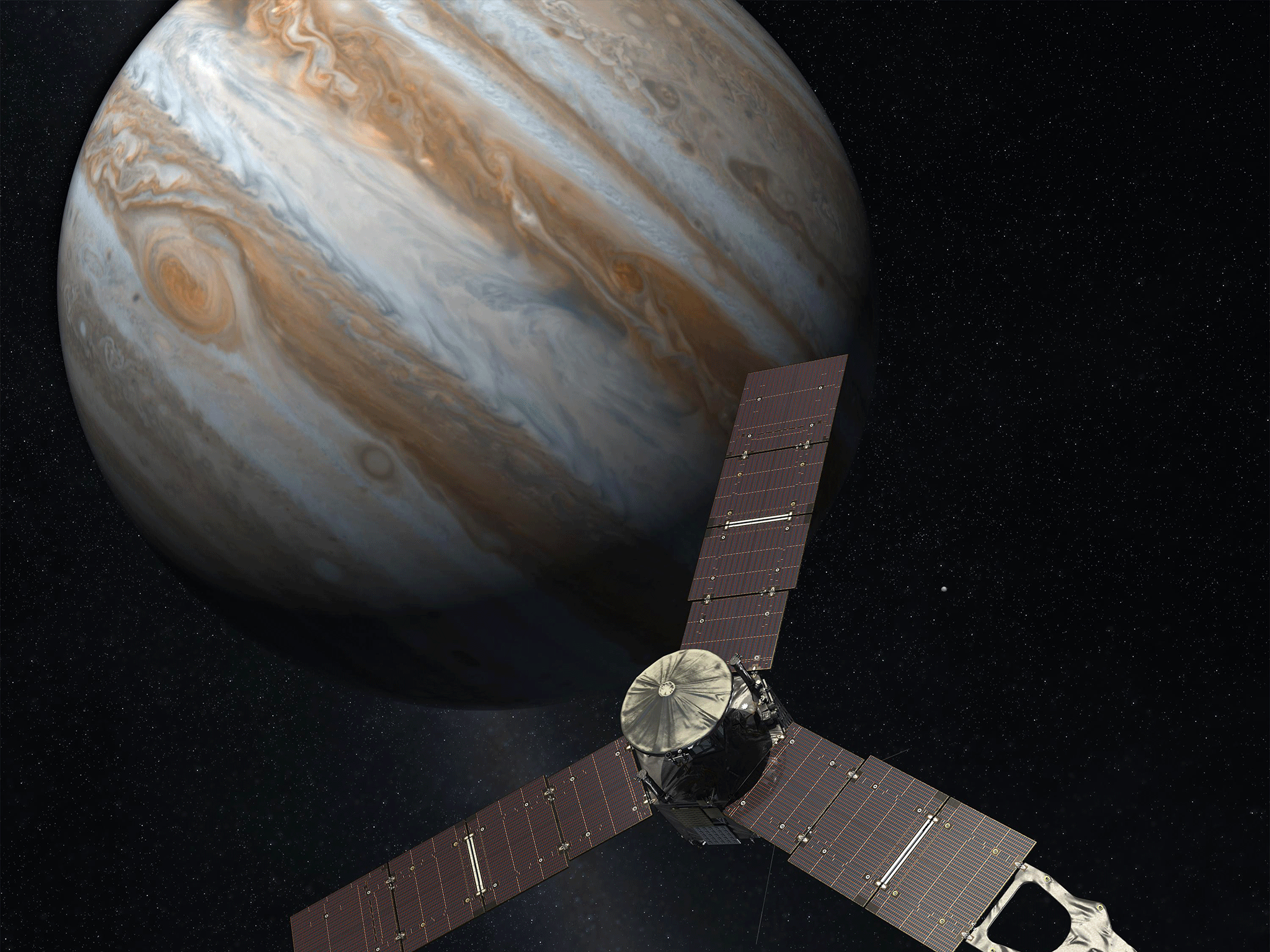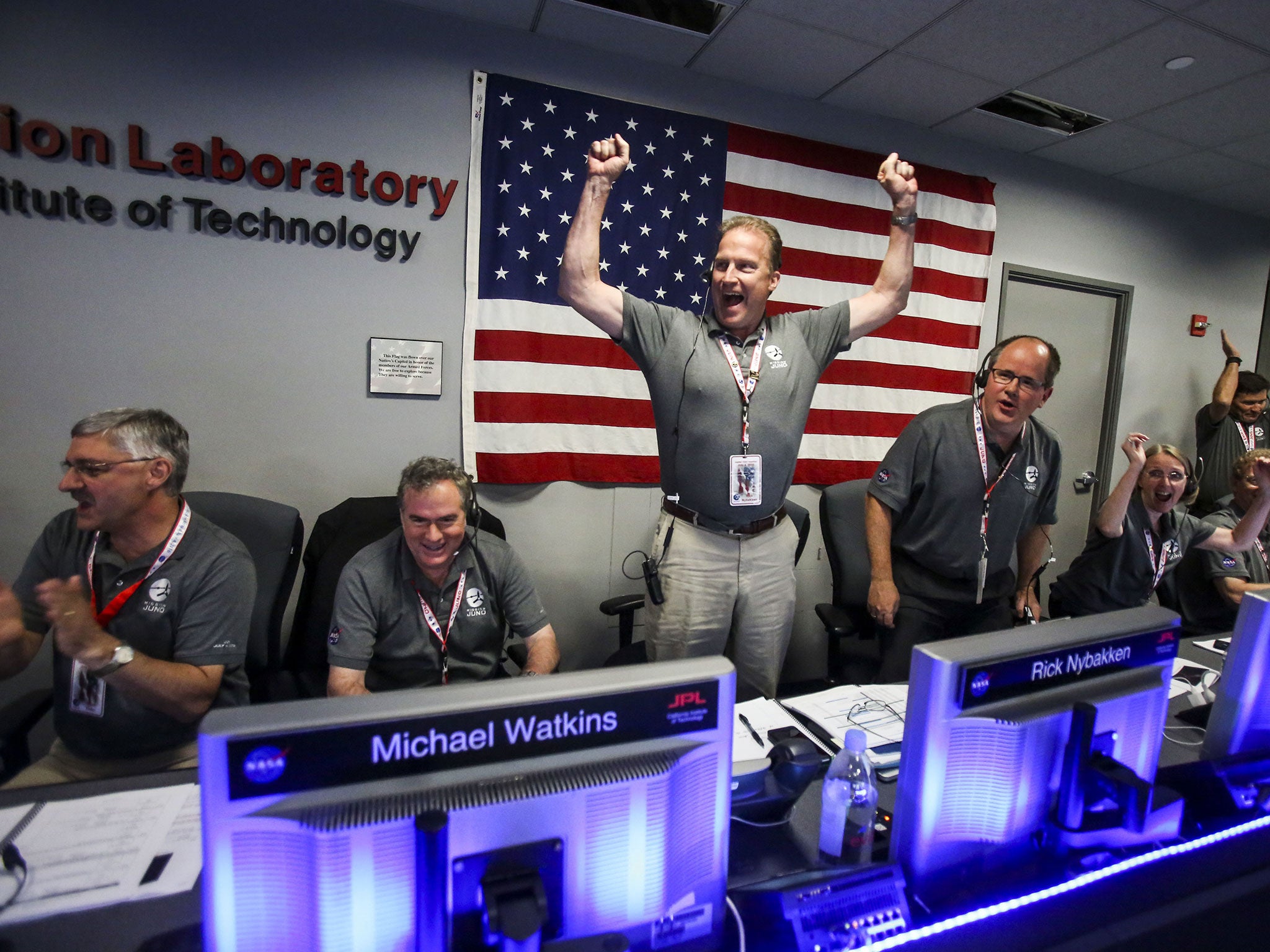Juno probe: Nasa spacecraft makes record-breaking approach towards Jupiter
‘This is our first opportunity to really take a close-up look at the king of our solar system,’ says a leading investigator

Juno, the spacecraft on a mission to Jupiter, orbited closer to the giant planet than any man-made object before it, in a record-breaking approach on Saturday.
The Nasa creation, which was launched five years ago, made the close approach to Jupiter by soaring around 2,600 miles above the planet.
As it cruised by at a speed of 130,000 mph, Juno was expected to capture astonishing images and plenty of scientific data, say mission controllers at Nasa.
The probe was said to have reached its closest point at 1.51pm – following the spacecraft’s dizzying flight path which involved escaping Earth’s orbit and moving into Jupiter’s.

Scott Bolton, a principle investigator at the Southwest Research Institute in San Antonio in Texas, said Juno would have its whole suite of nine instruments activated as it soars above Jupiter’s swirling cloud tops. The instruments had previously been switched off so as to survive the entry into the planet’s dangerous radiation belts.
"This is the first time we will be close to Jupiter since we entered orbit on 4 July. Back then we turned all our instruments off to focus on the rocket burn to get Juno into orbit around Jupiter," said Dr Bolton.
"Since then, we have checked Juno from stem to stern and back again. We still have more testing to do, but we are confident that everything is working great, so for this upcoming flyby Juno’s eyes and ears, our science instruments, will all be open.
"This is our first opportunity to really take a close-up look at the king of our solar system and begin to figure out how he works."
Nasa space agents have said they hope to release some of the first detailed pictures of Jupiter's north and south poles. It could take some days for the images to be downloaded on Earth.
Scientists are also anticipating a wealth of data about Jupiter's composition, gravity, magnetic field, and the source of its 384 mph winds.
A British team from the University of Leicester are playing a key role in the mission by focusing on the planet’s magnetic field, its auroras and atmosphere.
There are also some "passengers" onboard the spacecraft, which is powered by three enormous solar panels. These are titanium-built Lego figures of 17th century astronomer Galileo Galilei, the Roman goddess Juno and her husband the Roman god Jupiter.

A spacecraft called Galileo has also orbited Jupiter and its moons from 1995 to 2003, but at a distance much further out than Juno. The previous record for a close approach to the planet was set by Nasa’s Pioneer 11 spacecraft, which passed at a distance of 27,000 miles in 1974.
In total, 35 more close flybys are planned during Juno's primary mission, which is scheduled to end in February 2018.
Juno was first launched into space by an Atlas V rocket from Cape Canaveral in Florida on 5 August 2011.
It took five years to complete the 1.8 billion-mile journey from Earth, including a trek through circuit-frazzling radiation that requires its flight computer to be armoured in a titanium vault weighing almost 400 lb.
At the end of its 20-month mission, Juno will self-destruct by plunging into Jupiter’s dense atmosphere.
The craft is part of Nasa’s New Frontiers programme of robotic space missions which last year saw the New Horizons craft obtain close-up views of dwarf planet Pluto.
Additional reporting from Press Association
Join our commenting forum
Join thought-provoking conversations, follow other Independent readers and see their replies
Comments
Bookmark popover
Removed from bookmarks